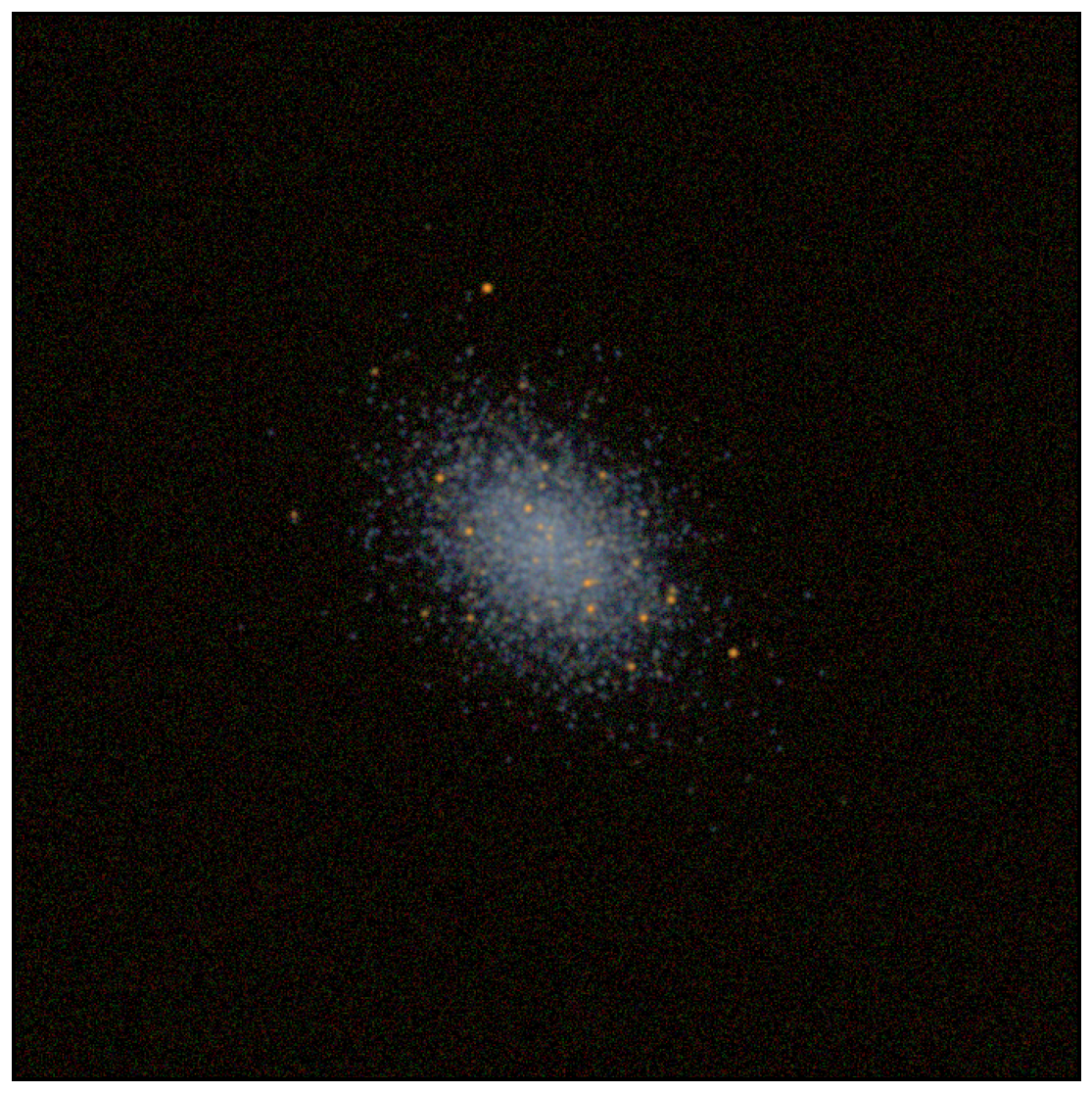Quick Start¶
This tutorial is designed to let you quickly see ArtPop in action. For a deeper dive into each of the components of the code, we recommend stepping through the list of tutorials on the home page.
Note: To generate MIST synthetic photometry using ArtPop, MIST isochrone grids are required. The first time you use a MIST grid, ArtPop will download it and save it to your MIST_PATH. If this environment variable is not set, the grid(s) will be saved in ~/.artpop/mist.
[1]:
# Third-party imports
import numpy as np
import matplotlib.pyplot as plt
from astropy import units as u
from astropy.visualization import make_lupton_rgb
# Project import
import artpop
# artpop's matplotlib style
plt.style.use(artpop.mpl_style)
# use this random state for reproducibility
rng = np.random.RandomState(100)
To create an artificial image, there are three main steps:
Create a Source object, which requires stellar magnitudes and positions.
Initialize an
Imagerobject, which can be an IdealImager or ArtImager.Mock observe the
sourceusing theobservemethod.
Step 1: Create a Source¶
Here we create an SSP with a Sersic distribution using the helper MISTSersicSSP class:
[2]:
# create young, metal poor SSP source at 5 Mpc
src = artpop.MISTSersicSSP(
log_age = 8.5, # log of age in years
feh = -1.5, # metallicity [Fe/H]
r_eff = 250 * u.pc, # effective radius
n = 0.8, # Sersic index
theta = 135 * u.deg, # position angle
ellip = 0.3, # ellipticity
num_stars = 1e6, # number of stars
phot_system = 'LSST', # photometric system
distance = 5 * u.Mpc, # distance to system
xy_dim = 701, # image dimension
pixel_scale = 0.2, # pixel scale in arcsec / pixel
random_state = rng, # random state for reproducibility
)
Step 2: Create an Imager¶
Let’s use the ArtImager, which creates fully artificial images taking the instrument and sky properties into account to calculate the noise.
[3]:
# instantiate an imager object
imager = artpop.ArtImager(
phot_system = 'LSST', # photometric system
diameter = 6.4 * u.m, # effective aperture diameter
read_noise = 4, # read noise in electrons
random_state = rng # random state for reproducibility
)
Step 3: Observe¶
Finally, we mock observe the source using ArtImager’s observe method. We’ll use astropy’s make_lupton_rgb function to make a pretty color image, which we will display using ArtPop’s show_image function:
[4]:
# PSF with 0.6'' seeing
psf = artpop.moffat_psf(fwhm=0.6*u.arcsec)
# observe in gri (assuming the same seeing in all bands)
obs_g = imager.observe(
source = src, # source object
bandpass = 'LSST_g', # bandpass of observation
exptime = 15 * u.min, # exposure time
sky_sb = 22, # sky surface brightness
psf = psf # point spread function
)
obs_r = imager.observe(src, 'LSST_r', 15 * u.min, sky_sb=21, psf=psf)
obs_i = imager.observe(src, 'LSST_i', 30 * u.min, sky_sb=20, psf=psf)
rgb = make_lupton_rgb(obs_i.image, obs_r.image, obs_g.image, stretch=0.4)
artpop.show_image(rgb);
